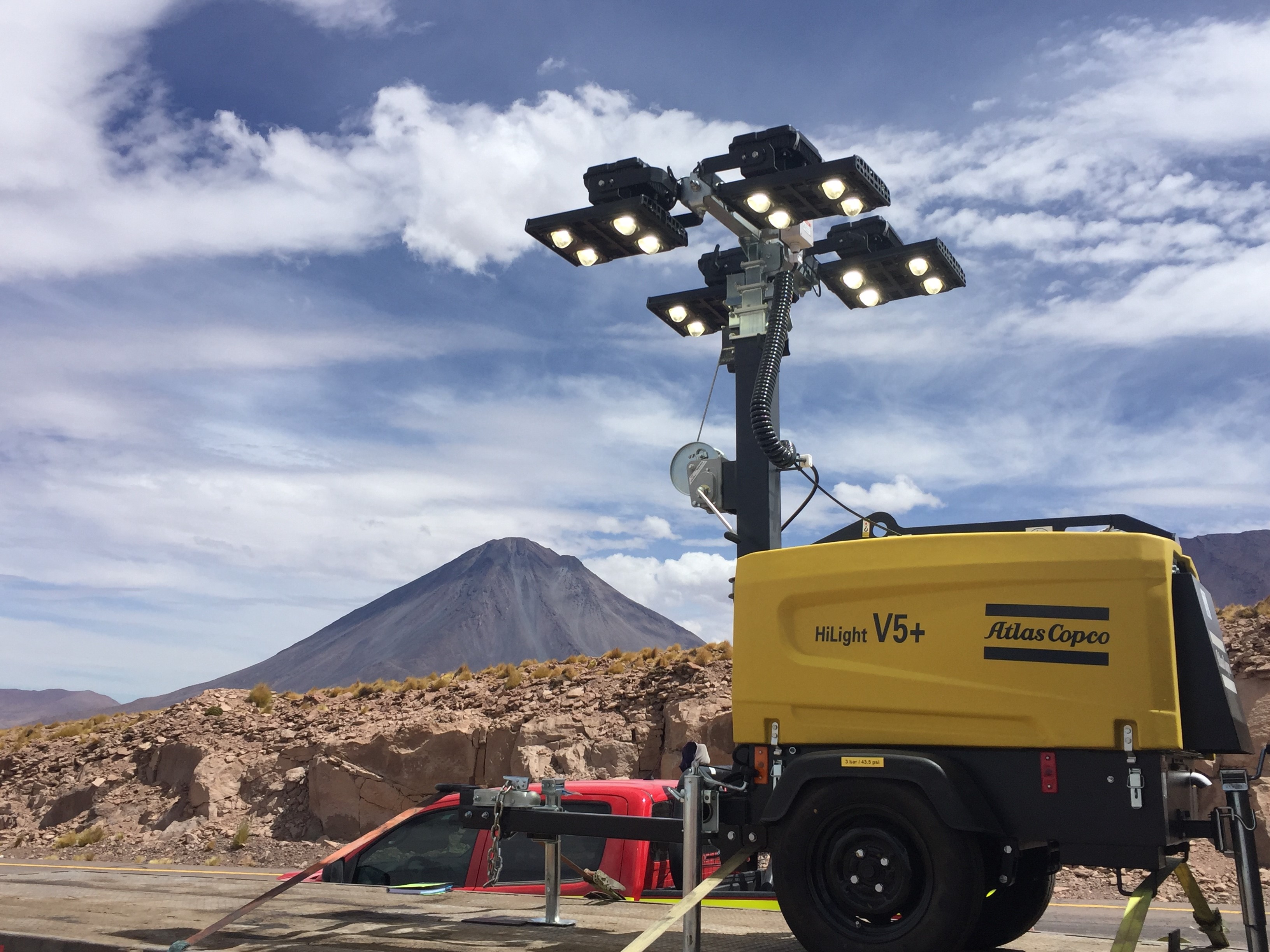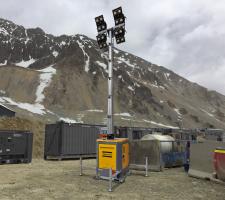
The use of LED light towers in quarries is said to be increasing, but what’s behind their growing popularity among quarry owners and contractors? Félix Gómez, spokesperson for light towers at
Having become commonplace in homes and offices, LED lighting is now spreading to quarry sites around the world. The use of LED light towers is growing but this innovative technology raises questions for contractors who are more familiar with longer-established offerings such as metal halide or high-intensity discharge (HID) lamps.
The benefits of a longer lifespan and the ability to generate greater and wider illumination while consuming less power are among the main benefits of switching to LED. It may sound like a simple decision, but once a buyer has decided to look at LED, there are a number of factors to bear in mind before buying.
Here are six of the key considerations relating to the use of LED light towers in quarries.
Are LED lights robust enough?
It’s no secret that quarries are tough and often incredibly dusty environments. Therefore, it’s a benefit that LED lamps contain no filaments, which makes them more resistant to vibrations and impacts than traditional metal halide lamps. This is a crucial consideration for companies operating in the quarry industry, who naturally demand the equipment they use is durable enough to survive harsh working conditions. But, it is not only the bulbs themselves that must be robust; the housing must be tough too. Look for LED lamps that are contained in shock-proof housing and offer ingress protection against dirt and other particles.
Transportation is another factor to consider, since this is typically when breakages can occur. It is not just the LED lamp itself, but the whole unit that must fold down into a compact form that can withstand the pressures of being moved across and between quarry sites. Very few surfaces in quarries are perfectly even. Therefore, it is important to consider LED light towers with stabilisation systems, which can be equipped with an easy to use level indicator to ensure the safety of workers.
How advanced is the technology?
It is impossible to simply fit an LED lamp into a standard light tower. The design of effective LED light towers involves paying attention to the lenses, and the optics they contain. These have a major influence on the quality and distribution of light, as well as reducing glare that can cause distraction and eye strain. It is worth remembering the fundamental reason for deploying light towers: good visibility that can improve productivity and safety on a quarry during the hours of darkness or in bad weather.
In recent years, there have been significant improvements in LED production, resulting in lamps that can produce exceptionally bright light. For instance, glare-free varieties that reduce eye strain are now available that can help enhance worker performance while improving their safety. Crucially, improved illumination can also facilitate a reduction in the number of accidents and injuries caused by lack of visibility on work sites.
By fine-tuning the technology, leading manufacturers have made LED lighting more versatile, accessible and effective for numerous applications. Unfortunately, the LED revolution has brought with it a swathe of low-quality entrants into the market, who over-promise on the performance of their products and under-deliver in practice. Given these circumstances, it is no surprise that a certain amount of confusion has arisen among buyers. The most important recommendation is to look for reputable manufacturers who have invested in refining and improving all aspects of LED technology to provide customers with tried and tested solutions.
Is LED more expensive?
Historically, one of the barriers to increased adoption of LED technology has been the relatively high upfront cost, compared with conventional light sources. This is due to the complexities of developing and manufacturing LED lamps. However, the rising popularity of LED has the benefit of bringing down the cost in many regions. Once regarded as an ‘elite’ technology, LED is becoming increasingly affordable. At the same time, it is important to look at the total cost of ownership. The potential energy efficiency gains are impressive. Depending on the particular product and the way it is deployed and operated it is not uncommon to see running costs reduce by 50 per cent. On large sites with multiple light towers, the long-term savings are difficult to ignore. Similarly, the longer lifespan of LED lamps reduces the regularity and cost of replacements and maintenance. It is vital to look at the bigger picture.
Furthermore, LED light towers are now being developed with fuel efficient power packs, which can deliver up to 2700 W. This ensures regulation of performance in any kind of temperature and altitude, and means the light tower’s engine can work more efficiently; reducing fuel consumption by an average of 60 per cent in certain applications. This can also help to reduce the carbon footprint of quarry operators, as some LED light towers have been proven to reduce CO2 emissions by up to 70 per cent compared to metal halide models.
What are the vital statistics?
One of the most confusing aspects of LED lighting is that its power and output is classified in a different way to its predecessors. Where wattage was always the measure of output, lux is the more accurate indicator now. This is because LED can produce the same or greater output with a far lower wattage.
A high-quality light tower should be capable of illuminating a 5,000 sq. m area with an average light level of 20 lux, using four lamps of 350 Watts each. To put that into context, the best metal halide light tower, comprising four lamps of 1,000 Watts each, would illuminate an area of only 4,000 sq. m. In terms of power usage, the metal halide example would require a 6,000W power pack, while the LED may only need 2,700W of net power, resulting in dramatic reductions in fuel consumption. With the latest LED advances, it is possible to achieve fuel consumption of around 0.5 litres per hour. The light coverage area, average lux and power requirements of the engine are three of the most important specifications to look at when selecting a light tower.
Another key factor to consider when assessing a light tower is its Colour Rendering Index (CRI). LED lamps have a high CRI score, with some LED light towers on the market providing a CRI of >85 (out of 100); which is close to natural light sources. This is essential to guarantee the correct tone of light that will enhance comfort and safety of people operating in quarries.
How long will an LED last?
The extended lifespan of LED lamps, compared with conventional light sources, is one of their biggest advantages. The expected lifetime of LED lamps under heavy duty use is around 30,000 hours, equivalent to approximately 10 years. In comparison, a metal halide bulb tends to have a maximum lifespan of 6,000 hours, which is reduced even further under heavy duty operation. A luminaire is considered to have failed at the point in time when the lumen value has depreciated to 70 per cent of the initial lumen value. Therefore, the ‘practical life’ is defined as the period of time between the LED first being activated and the point at which its output falls below 70 percent of its initial output. Buyers should always request evidence of an LED’s lifespan, which any reputable manufacturer will be able to provide.
What is the effect of working conditions?
The tough conditions that light towers will experience in quarry applications make durability a key concern. One of the lesser known advantages of LED lighting is that it is less sensitive to temperature variations than many of its forebears. For example, hot and humid conditions do not affect the operation of LED in the same way they might affect a metal halide luminaire. Similarly, LEDs can operate fault-free in low temperatures too.
















